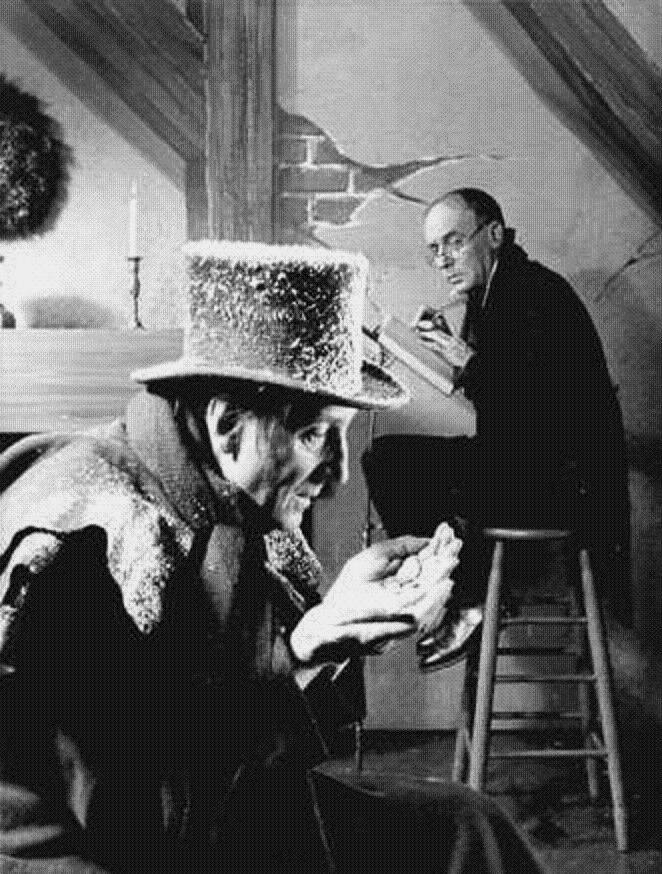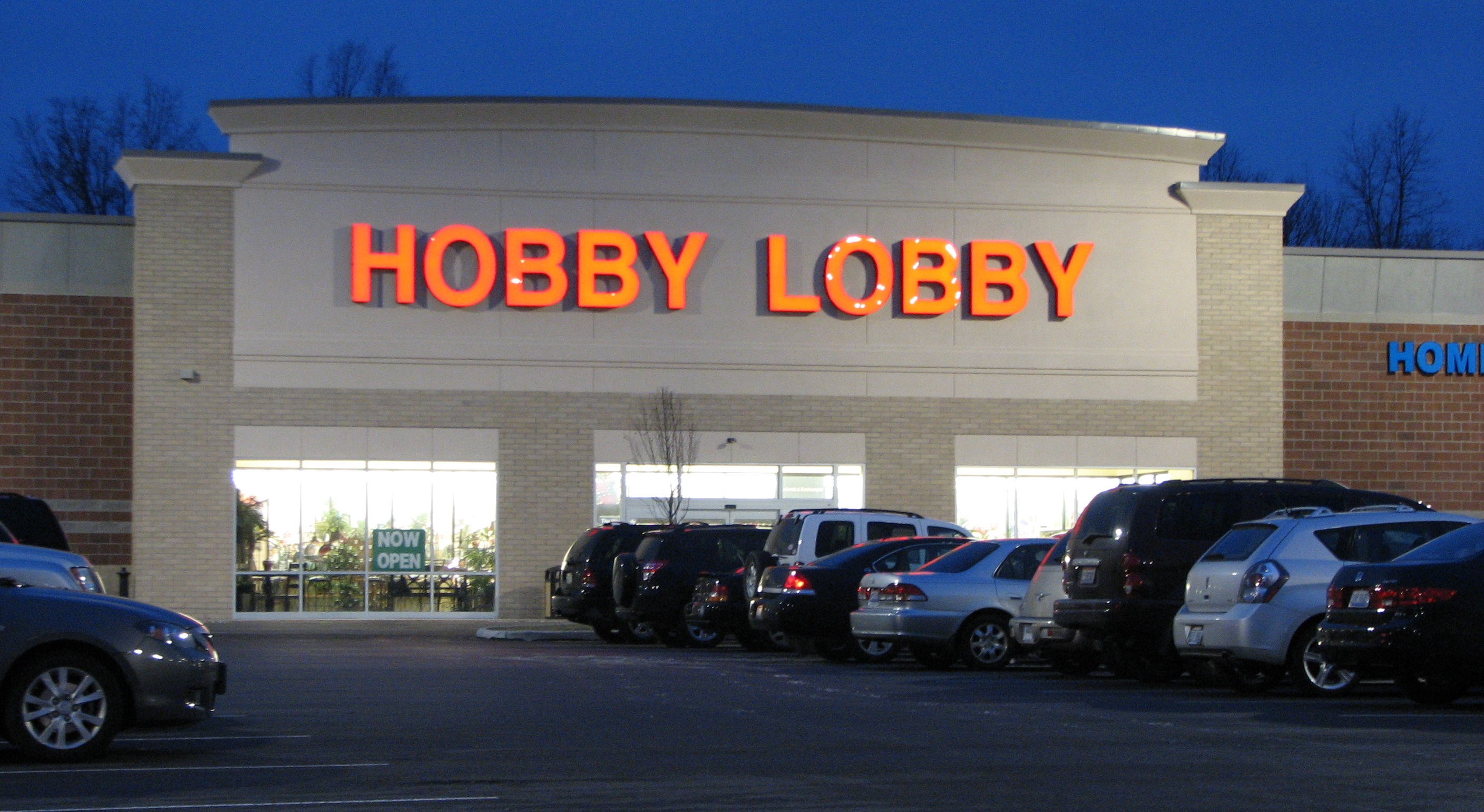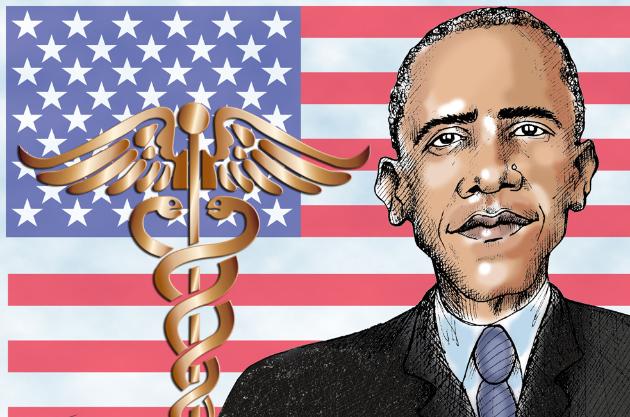
by Adam Hartung | Jul 26, 2016 | Leadership, Marketing, Sports
Most leaders think of themselves as decision makers. Many people remember in 2006 when President George Bush, defending Donald Rumsfeld as his Defense Secretary said “I am the Decider. I decide what’s best.” It earned him the nickname “Decider-in-Chief.” Most CEOs echo this sentiment, Most leaders like to define themselves by the decisions they make.
But whether a decision is good, or not, has a lot of interpretations. Often the immediate aftermath of a decision may look great. It might appear as if that decision was obvious. And often decisions make a lot of people happy. As we are entering the most intense part of the U.S. Presidential election, both candidates are eager to tell you what decisions they have made – and what decisions they will make if elected. And most people will look no further than the immediate expected impact of those decisions.
However, the quality of most decisions is not based on the immediate, or obvious, first implications. Rather, the quality of decisions is discovered over time, as we see the consequences – intended an unintended. Because quite often, what looked good at first can turn out to be very, very bad.
 The people of North Carolina passed a law to control the use of public bathrooms. Most people of the state thought this was a good idea, including the Governor. But some didn’t like the law, and many spoke up. Last week the NBA decided that it would cancel its All Star game scheduled in Charlotte due to discrimination issues caused by this law. This change will cost Charlotte about $100M.
The people of North Carolina passed a law to control the use of public bathrooms. Most people of the state thought this was a good idea, including the Governor. But some didn’t like the law, and many spoke up. Last week the NBA decided that it would cancel its All Star game scheduled in Charlotte due to discrimination issues caused by this law. This change will cost Charlotte about $100M.
That action by the NBA is what’s called unintended consequences. Lawmakers didn’t really consider that the NBA might decide to take its business elsewhere due to this state legislation. It’s what some people call “oops. I didn’t think about that when I made my decision.”
Robert Reich, Secretary of Labor for President Clinton, was a staunch supporter of unions. In his book “Locked in the Cabinet” he tells the story of visiting an auto plant in Oklahoma supporting the union and workers rights. He thought his support would incent the company’s leaders to negotiate more favorably with the union. Instead, the company closed the plant. Laid-off everyone. Oops. The unintended consequences of what he thought was an obvious move of support led to the worst possible outcome for the workers.
President Obama worked the Congress hard to create the Affordable Care Act, or Obamacare, for everyone in America. One intention was to make sure employers covered all their workers, so the law required that if an employer had health care for any workers he had to offer that health care to all employees who work over 30 hours per week. So almost all employers of part time workers suddenly said that none could work more than 30 hours. Those that worked 32 (4 days/week) or 36 suddenly had their hours cut. Now those lower-income people not only had no health care, but less money in their pay envelopes. Oops. Unintended consequence.
President Reagan and his wife launched the “War on Drugs.” How could that be a bad thing? Illegal drugs are dangerous, as is the supply chain. But now, some 30 years later, the Federal Bureau of Prisons reports that almost half (46.3% or over 85,000) inmates are there on drug charges. The USA now spends $51B annually on this drug war, which is about 20% more than is spent on the real war being waged with Afghanistan, Iraq and ISIS. There are now over 1.5M arrests each year, with 83% of those merely for possession. Oops. Unintended consequences. It seemed like such a good idea at the time.
This is why it is so important leaders take their time to make thoughtful decisions, often with the input of many other people. Because the quality of a decision is not measured by how one views it immediately. Rather, the value is decided over time as the opportunity arises to observe the unintended consequences, and their impact. The best decisions are those in which the future consequences are identified, discussed and made part of the planning – so they aren’t unintended and the “decider” isn’t running around saying “oops.”
As you listen to the politicians this cycle, keep in mind what would be the unintended consequences of implementing what they say:
- What would be the social impact, and transfer of wealth, from suddenly forgiving all student loans?
- What would be the consequences on trade, and jobs, of not supporting historical government trade agreements?
- What would be the consequences on national security of not supporting historically allied governments?
- What would be the long-term consequence not allowing visitors based on race, religion or sexual orientation?
- What would be the consequence of not repaying the government’s bonds?
- What would be the long-term impact on economic growth of higher regulations on banks – that already have seen dramatic increases in regulation slowing the recovery?
- What would be the long-term consequences on food production, housing and lifestyles of failing to address global warming?
Business leaders should follow the same practice. Every time a decision is necessary, is the best effort made to obtain all the information you could on the topic? Do you obtain input from your detractors, as well as admirers? Do you think through not only what is popular, but what will happen months into the future? Do you consider the potential reaction by your customers? Employees? Suppliers? Competitors?
There are very few “perfect decisions.” All decisions have consequences. Often, there is a trade-off between the good outcomes, and the bad outcomes. But the key is to know them all, and balance the interests and outcomes. Consider the consequences, good and bad, and plan for them. Only by doing that can you avoid later saying “oops.”

by Adam Hartung | Dec 19, 2015 | Books, Current Affairs, Ethics, Lifecycle
America’s middle class has been decimated. Ever since Ronald Reagan rewrote the tax code, dramatically lowering marginal rates on wealthy people and slashing capital gains taxes, America’s wealthy have been amassing even greater wealth, while the middle class has gone backward and the poor have remained poor. Losing 30% of their wealth, and for many most of their home equity, has left what were once middle class families actually closer to definitions of working poor than a 1950s-1960s middle class.
When Charles Dickens wrote “A Christmas Carole” he brought to life for readers the striking difference between those who “have” from those who “have not” in early England. If you had money England was a great place to be. If you relied on your labors then you were struggling to make ends meet, and regularly disappointing yourself and your family.
For a great many American’s that is the situation in 2015 USA.
At the book’s outset, Mr. Ebenezer Scrooge felt that his wealth was all due to his own great skill. He gave himself 100% of the credit for amassing a fortune, and he felt that it was wrong of laborers, such as his bookkeeper Mr. Cratchit, to expect to pay when seeking a day off for Christmas.
Unfortunately, this sounds far too often like the wealthy and 1%ers. They feel as if their wealth is 100% due to their great intelligence, skill, hard work or conniving. And they don’t think they owe anyone anything as they work to keep unions at bay as they campaign to derail all employee bargaining. Nor do they think they should pay taxes on their wealth as many actively seek to destroy the role of government.
Meanwhile, there are employers today who have taken a page right out of Mr. Scrooge’s book of worklife desolation. Ever since President Reagan fired the Air Traffic Controllers Union employee rights have been on the downhill. Employers increasingly do not allow employees to have any say in their work hours or workplace conditions – such as Marissa Mayer eliminating work from home at Yahoo, yet expecting 3 year commitments from all managers.
 Just as Mr. Scrooge refused to put more coal in the office stove as Mr. Cratchit’s fingers froze, employers like WalMart rigidly control the workplace environment – right down to the temperature in every single building and office – in order to save cost regardless of employee satisfaction. Workplace comfort has little voice when implementing the CEOs latest cost-saving regimen.
Just as Mr. Scrooge refused to put more coal in the office stove as Mr. Cratchit’s fingers froze, employers like WalMart rigidly control the workplace environment – right down to the temperature in every single building and office – in order to save cost regardless of employee satisfaction. Workplace comfort has little voice when implementing the CEOs latest cost-saving regimen.
Just as Mr. Scrooge objected to giving the 25th December as a paid holiday (picking his pocket once a year was his viewpoint,) many employers keep cutting sick leave and holidays – or, worse, they allow days off but expect employees to respond to texts, voice mails, emails and social media 24x7x365. “Take all the holiday you want, just respond within minutes to the company’s every need, regardless of day or time.”
Increasingly, those who “go to work” have less and less voice about their work. How many of you readers will check your work voice mail and/or email on Christmas Day? Is this not the modern equivalent of your employer, like Scrooge, treating you like a filcher if you don’t work on the 25th December? But, do you dare leave the smartphone, tablet or laptop alone on this day? Do you risk falling behind on your job, or angering your boss on the 26th if something happened and you failed to respond?
Like many with struggling economic uncertainty, Bob Cratchit had a very ill son. But Mr. Scrooge could not be bothered by such concerns. Mr. Scrooge had a business to run, and if an employee’s family was suffering then it was up to social services to take care of such things. If those social services weren’t up to standards, well it simply was not his problem. He wasn’t the government – although he did object to any and all taxes. And he had no value for the government offering decent prisons, or medical care to everyone.
Today, employers right and left have dropped employee health insurance, recommending employees go on the exchanges; even though these same employers do not offer any incremental income to cover the cost of exchange-based employee insurance. And many employers are cutting employee hours to make sure they are not able to demand health care coverage. And the majority of employers, and employer associations such as the Chamber of Commerce, want to eliminate the Affordable Care Act entirely, leaving their employees with no health care at all – as was the case for many prior to ACA passage.
Even worse, there are employers (especially in retail, fast food and other minimum wage environments) with employees earning so little pay that as employers they recommend their employees file for government based Medicaid in order to receive the bottom basics of healthcare. Employees are a necessity, but not if they are sick or if the employer has to help their families maintain good health.
But things changed for Mr. Scrooge, and we can hope they do for a lot more of America’s employers and wealthy elite.
Mr. Scrooge’s former partner, Mr. Jakob Marley, visits Mr. Scrooge in a dream and reminds him that, in fact, there was a lot more to his life, and wealth creation, than just Ebenezer’s toils. Those around him helped him become successful, and others in his life were actually very important to his happiness. He reminds Mr Scrooge that as he isolated himself in the search for ever greater wealth he gained money, but lost a lot of happiness.
Today we have some business leaders taking the cue from Mr. Marley, and speaking out to the Scrooges. In particular, we can be thankful for folks like Warren Buffet who consistently points out the great luck he had to be born with certain skills at this specific point in time. Mr. Buffett regularly credits his wealth creation with the luck to receive a good education, learning from academics such as Ben Graham, and having a great network of colleagues to help him invest.
Further, amplifying his role as a modern day Jacob Marley, Mr. Buffett recognizes the vast difference between his situation and those around him. He has pointed out that his secretary pays a higher percent of her income in taxes than himself, and he points out this is a remarkably unfair situation. Additionally, he makes it clear that for many wealth is a gift of birth – and “winning the ovarian lottery” does not make that wealthy person smarter, harder working or more valuable to society. Rather, just lucky.
What we need is for more wealthy Americans to have a vision of Christmas future – as it appeared to Mr. Scrooge. He saw how wealth inequality would worsen young Tiny Tim’s health, leaving him crippled and dying. He saw his employee Mr. Cratchet struggle and become ill. These visions scared him. Scared him so much, he offered a bounty upon his community, sharing his wealth.
Mr. Scrooge realized that great wealth, preserved just for him, was without merit. He was doomed to a future of being rich, but without friends, without a great world of colleagues and without the sharing of riches among everyone in order that all in society could be healthy and grow. Many would suffer, and die, if society overall did not take actions to share success.
These days we do have a few of these visionary 1%ers, such as Bill Gates, Warren Buffett and recently Mark Zuckerberg, who are either currently, or in the future, planning to disseminate their vast wealth for the good of mankind.
Yet, middle class Americans have been watching their dreams evaporate. Over the last 50 years America has changed, and they have been left behind. Hard work, well…….. it just doesn’t give people what it once did. Policy changes that favored the wealthy with Ayn Rand style tax programs have made the rich ever richer, supported the legal rights of big corporations and left the middle class with a lot less money and power. Incomes that did not come close to matching inflation, and home values that too often are more anchors than balloons have beset 2015’s strivers.
It will take more than philanthropic foundations and a few standout generous donors to rebuild America’s middle class. It will take policies that provide more (more safety nets, more health care, more education, more pension protection, more job protections and more political power) for those in the middle, and give them economic advantages today offered only wealthier Americans.
Let us hope that in 2016 we see a re-awakening of the need to undertake such rebuilding by policymakers, corporate leaders and the 1%. Let us hope this Christmas for a stronger, more robust, healthier and disparate, shared economy “for each and every one.”

by Adam Hartung | Jul 1, 2014 | Current Affairs, Defend & Extend, Leadership, Religion
Yesterday the U.S. Supreme Court ruled in favor of Hobby Lobby and against the U.S. government in a case revolving around health care for employees. I’m a business person, not a lawyer, so to me it was key to understand from a business viewpoint exactly what Hobby Lobby “won.”
It appears Hobby Lobby’s leaders “won” the right to refuse to provide certain kinds of health care to their employees as had been mandated by the Affordable Care Act. The justification primarily being that such health care (all associated with female birth control) violated religious beliefs of the company owners.
As a business person I wondered what the outcome would be if the next case is brought to the court by a business owner who happens to be a Christian Scientist. Would this next company be allowed to eliminate offering vaccines – or maybe health care altogether – because the owners don’t believe in modern medical treatments?
This may sound extreme, and missing the point revolving around the controversy over birth control. But not really. Because the point of business is to legally create solutions for customer needs at a profit. Doing this requires doing a lot of things right in order to attract and retain the right employees, the right suppliers and customers by making all of them extremely happy. I don’t recall Adam Smith, Milton Friedman, Peter Drucker, Edward Demming, John Galbraith or any other historically noted business writer saying the point of business to set the moral compass of its customers, suppliers or employees.
I’m not sure where enforcing the historical religious beliefs of founders or owners plays a role in business. At all. Even if they have the legal right to do so, is it smart business leadership?

Hobby Lobby Store
Hobby Lobby competes in the extraordinarily tough retail market. The ground is littered with failures, and formerly great companies which are struggling such as Sears, KMart, JCPenney, Best Buy, etc. And recently the industry has been rocked with security breaches, reducing customer faith in stalwarts like Target. And profits are being challenged across all brick-and-mortar traditional retailers by on-line companies led by Amazon, who have much lower cost structures.
All the trends in retail bode poorly for Hobby Lobby. Hobby Lobby does almost no business on-line, and even closes its stores on Sunday. Given consumer desires to have what they want, when they want it, unfettered by time or location, a traditional retailer like Hobby Lobby already has its hands full just figuring out how to keep competitors at bay. Customers don’t need much encouragement to skip any particular store in search of easily available products and instant price information across retailers.
Social trends are also very clear in the USA. The great majority of Americans support health care for everyone. Including offering birth control, and all other forms of women’s health needs. This has nothing to do with the Affordable Care Act. Health care, and women’s rights to manage their individual reproductiveness, is something that is clearly a majority viewpoint – and most people think it should be covered by health insurance.
So, given the customer options available, is it smart for any retailer to brag that they are unwilling to offer employees health care? Although not tied to any specific social issues, Wal-Mart has long dealt with customer and employee defections due to policies which reduce employee benefits, such as health care. Is this an issue which is likely to help Hobby Lobby grow?
Is it smart, as Hobby Lobby competes for merchandise from suppliers, negotiates on leases with landlords, seeks new store permits from local governments, recruits employees as buyers, merchandisers, store managers and clerks, and seeks customers who can shop on-line or at competitors to brandish the sword of intolerance on a specific issue which upsets the company owner? And one where this owner is on the opposite side of public opinion?
Long ago a group of retired U.S. military Generals told me that in Vietnam America won every battle, but lost the war. Through overwhelming firepower and manpower, there was no way we would not win any combat mission. But that missed the point. As a result of focusing on the combat, America’s leaders missed the opportunity win “the hearts and minds” of most Vietnamese. In the end America left Vietnam in a rushed abandonment of Saigon, and the North Vietnamese took over all of South Vietnam. Although we did what leaders believed was “right,” and fought each battle to a win, in the end America lost the objective of maintaining a free, independent and democratic Vietnam.
The leaders of Hobby Lobby won this battle. But is this good for the customers, suppliers, communities where stores are located, and employees of Hobby Lobby? Will these constituents continue to support Hobby Lobby, or will they possibly choose alternatives? If in its actions, including legal arguing at the Supreme Court, Hobby Lobby may have preserved what its leaders think is an important legal precedent. But, have their strengthened their business competitiveness so they will be a long-term success?
Perhaps Hobby Lobby might want to listen to the CEO of Chick-fil-A, which suffered a serious media firestorm when it became public their owners donated money to anti-gay organizations. CEO Cathy decided it was best to “just shut up and go sell chicken.” Business is tough enough, loaded with plenty of battles, without looking for fights that are against trends.

by Adam Hartung | Mar 4, 2014 | Current Affairs, Disruptions, Leadership
Obamacare is the moniker for the Affordable Care Act. Unfortunately, a lot of people thought the last thing Obamacare would do was make health care more affordable. Yet, early signs are pointing in the direction of a long-term change in America’s cost of providing health services.
The November, 2013 White House report on “Trends in Health Care Cost Growth” provides a plethora of data supporting declining health care costs. Growth in health care cost per capita at 1% in 2011 was the lowest since record keeping began in the 1960s. Health care inflation now seems to be about the same as general inflation, after 5 decades of consistently outpacing other price increases. And Congressional Budget Office (CBO) projections of Medicare/Medicaid cost as a percent of Gross Domestic Product (GDP) have declined substantially since 2010.
Of course, one could easily accuse the White House of being self-serving with this report. But at a February National Association of Corporate Directors Chicago Conference on health care,
all agreed that, indeed, the world has changed as a result of Obamacare. And one short-term outcome is American health care trending toward greater affordability.
How Obamacare accomplished this, however, is not at all obvious.
Abdication: that is the word which best desribed patient health care choices for the last several decades. Patients simply did whatever they were told to do. If a test was administered, or a procedure recommended, or a referral to a specialist given, or a drug prescribed patients simply did what they were told – “as long as the insurance paid.”
The process of health care implementation, how patients were treated, was specified by medical professionals in conjunction with insurance companies and Medicare. Patients had little – or nothing – to do with the decision making process. The service was either offered, and largely free, or it wasn’t offered.
In effect, Americans abdicated health care decision-making to others. The decisions about what would be treated, when and how was almost wholly made without patient involvement. And what would be charged, as well as who would pay, was also made by someone other than the patient. The patient had no involvement in determining if there was any sort of cost/benefit analysis, or the comparing of different care options.
Insurance companies dickered with providers over pricing. Then employers dickered with insurance companies over what would be covered in a plan, what the price would be and what percentage was paid by the insurance company and what would be paid by patients. When a patient needed treatment either the employer’s insurance company paid, after a negotiation on price with the provider, or the insurance company did not. And patients largely consumed whatever care was offered under their plan.
Or, if it was Medicare the same process applied, just substitute for “employer” the words “a government agency.”
Americans had abdicated the decision-making process for health care to a cumbersome process that involved medical professionals, insurance companies and employers. While patients may have acted like health care was free, everyone knew it was not free. But the process of deciding what would be done, pricing and measuring benefits had been abdicated by patients to this process years ago.
Obamacare moves Americans from a world of abdication to a world of accountability. Everyone now has to be insured, so the decision about what coverage each person has, at what level and cost, is now in the hands of the patient. Rather than a single employer option, patients have a veritable smorgasboard of coverage options from which they can select. And this begins the process of making each person accountable for their health care cost.
When people receive treatment, by and large more is now being paid by the patient. And once people had to start paying, they had to be accountable for the cost (higher deductibles and co-pays had already started this process before Obamacare.) When people became accountable for the cost, a lot more questions started to be asked about the price and the benefit. Instead of consuming everything that was available, because there was no cost implication, patient accountability for some of the cost has now forced people to ask questions before committing to treatments.
Higher accountability now has consumers (patients) asking for more choices. And more choices pushes providers to realize that price and delivery make a difference to the patient – who is now a decision-making buyer.
In economic lingo, accountability is changing the health care demand and supply curves. Previously there was no elasticity of demand. Patients had no incentives to reduce demand, as health care was perceived as free. Providers had no incentive to alter supply, because the more they supplied the more they were paid. Both supply and demand went straight up, because there was no pricing element to stand in the way of both increasing geometrically.
But now patients are making decisions which alter demand. Increasingly they determine what procedures to have, based on price and expected outcomes. And supply is now altered based upon provider and price. Patients can shop amongst hospitals and outpatient facilities to determine the cost of minor surgery, for example, and decide which solution they prefer. More services, at different locations and different price points alter the supply curve, and make an impact on the demand curve. We now have elasticity in both demand and supply.
A patient with a mild heart arythmia can decide if they really need an in-house EKG with a cardiologist review, or substitute an EKG detected from a smartphone diagnosed by an EKG tech remotely. With both services offered at very different price points (and a host of options in the middle,) it is possible for the patient to change their demand for something like an EKG – and on to total cost of cardiac care. They may buy more of some care, such as services they find less costly, or providers that are less pricey, and less of another service which is more costly due to the service, the provider or a combination of the two.
And thus accountability starts us down the road to greater affordability.
In distribution terms, the old system was a “wholesale system” which had very expensive suppliers with pricing which was opaque – and often very bizarre. Pricing was impossible to understand. Middlemen in insurance companies hired by employers tried to determine what services should be given to patients, and at what prices for the employers (not the patient) to pay. This wholesale distribution method of health care drove prices up. Neither those creating demand (patients) or those offering the supply (medical providers) had any incentive to use less health care or lower the price. And often it left both the patient and the supplier extremely unhappy with how they were treated by arbitrary middle men more interested in groups than individuals.
But the new system is a retail system. Because the patient no longer abdicates decision making to middle-men, and instead is accountable for the health care they receive and the price they pay. It is creating a far more rational pricing system, and generating new curves that are starting to balance both supply and demand; while simultaneously encouraging the implementation of new options that provide the ability to enhance the service and/or outcome at lower price points.
Obamacare is just beginning its implementation. “The devil is in the details,” and as we saw with the government web site for exchanges there have been many, many glitches. As with anything so encompassing and complex, there are lots of SNAFUs. The market is still far from transparent, and patients are far from educated, much less fully informed, decision makers. There is a lot of confusion amongst providers, suppliers and patients. Regulations are unclear, and not always handled consistently or judiciously.
But, America has made one heck of a start toward containing something which has overhung economic growth since the 1970s. The health care cost trend is toward greater price visibility, smarter consumers, more options and lower health care costs both short- and long-term.
In the 1960s Congress, and the nation, was deeply divided over passing the Civil Rights Act. Its impact would be significant on both the way of life for many people, and the economy. How it would shape America was unclear, and many opposed its passage. Called for by President Kennedy, President Johnson worked hard – and with lots of strong-arming – to obtain its passage after Kennedy’s death.
After a lot of haggling, some Congressional trickery, filibustering and a lot of legal challenges, the Civil Rights Act was passed in 1964 and it ushered in a new wave of economic growth as it freed resources to add to the American economy instead of being held back. It was a game changer for the nation, and 40 years later, it’s hard to imagine an America without the gains made by the Civil Rights Act.
Looking 40 years forward, Obamacare – the ACA – may well be legislation that is seen as an economic game changer. Although its passage was bruising to many in the nation, it changed health care from a system of patient abdication to one of patient accountability, and thereby directed health care toward greater affordability for the country and its citizens.

by Adam Hartung | Dec 3, 2013 | Current Affairs, Leadership, Web/Tech
“A horse, a horse, my Kingdom for a Horse” King Richard cried out just before he was murdered (Richard III by Billy Shakespeare ~ 1592.)
King Richard of England was really, really unpopular. He was accused of ascending to the throne via various Michiavellian behaviors. Eventually he was trapped on the battlefield by his enemies, his horse was slain, and he uttered the above line – metaphorically begging for a way out of the trapped world that was his kingdom. He didn’t get the horse – and he died.
After over 20 years of fighting about health care the U.S. Congress passed the Affordable Care Act and the President signed it into law in 2010. About the only agreement in the country was that the ACA appealed to almost no one due to the compromises required to get it passed. It was fought by wide ranging constituencies, until in 2012 the Supreme Court upheld the law.
But not even that was the end of the fight, because in October, 2013 Congress shut down the government as groups fought about whether the act would receive any funding to implement its own provisions. Eventually an agreement was reached, the government re-opened, and it looked like the ACA was going into practice.
Oh, but wait…
In today’s world everyone uses the internet. Face-to-face meetings are largely gone, and forests by the score are being saved as we refuse to use paper when a digital screen will accomplish our tasks. So it only made sense that when the U.S. population was to sign up for the benefits of this new law they would do so on the World Wide Web.
Folks would buy health insurance just like they buy books and clothes, and download movies, from a web site. Billions of transactions have happened over the web the last decade. Why, Google alone does over 5 billion searches each and every day. So it seemed easily practical, and doable, for implementation to be as easy as opening a new web site. We all expected that come November we’d simply hit the search button, go to the web site, price out the options and make our health insurance decisions.
Of course we all know how that worked out. Or didn’t. The site didn’t work for spit. Apple may be able to track about a million apps on its site, and it seems able to deliver about 4 million per day at an average price of about a buck. But the U.S. government web site – after spending over $400million (maybe even $1B) – couldn’t seem to process but a few thousand applications a day. So Congressional hearings started – cries for firing Secretary Sebelius rang out – and President Obama’s favorability plummeted faster than the failed effort messages came up in browsers at Healthcare.gov.
You could almost hear the President on the steps of the White House “A web site, a working web site, my Presidency for a working web site.”
There was a Chicago mayor who lost an election because he couldn’t clear the streets of snow. Something as simple as removing snow in a 1979 blizzard overtook everything Mayor Bilandic’s administration did, and wanted to do, for his great city. When Chicagoans couldn’t access their streets for 3 days they “threw the bastard out” by electing a new candidate (Jane Byrne) in the next primary – and she went on to be the next mayor.
And the only thing anyone remembers about Mayor Bilandic was he didn’t get the snow off the streets.
This lesson is not lost on any local mayor. You can have grand plans, and vision, but if you can’t keep the streets clean you get thrown out.
We’ve entered a new era of political expectations. Citizens now expect their politicians to build and operate functional web sites. They expect their government to do as least as good a job as private industry at everything digital. And if politicians, or administrators, flub a web implementation it can have signficant, damaging implications.
Failure to build a functional web site, meeting the average person’s expectations, is a terrible, terrible falure these days. Perhaps enough to lose the voters’ trust. Perhaps enough to breath new life into those who want to overturn your “landmark legislation.” And perhaps enough to kill your place in history.

 The people of North Carolina passed a law to control the use of public bathrooms. Most people of the state thought this was a good idea, including the Governor. But some didn’t like the law, and many spoke up. Last week the NBA decided that it would cancel its All Star game scheduled in Charlotte due to discrimination issues caused by this law. This change will cost Charlotte about $100M.
The people of North Carolina passed a law to control the use of public bathrooms. Most people of the state thought this was a good idea, including the Governor. But some didn’t like the law, and many spoke up. Last week the NBA decided that it would cancel its All Star game scheduled in Charlotte due to discrimination issues caused by this law. This change will cost Charlotte about $100M.




